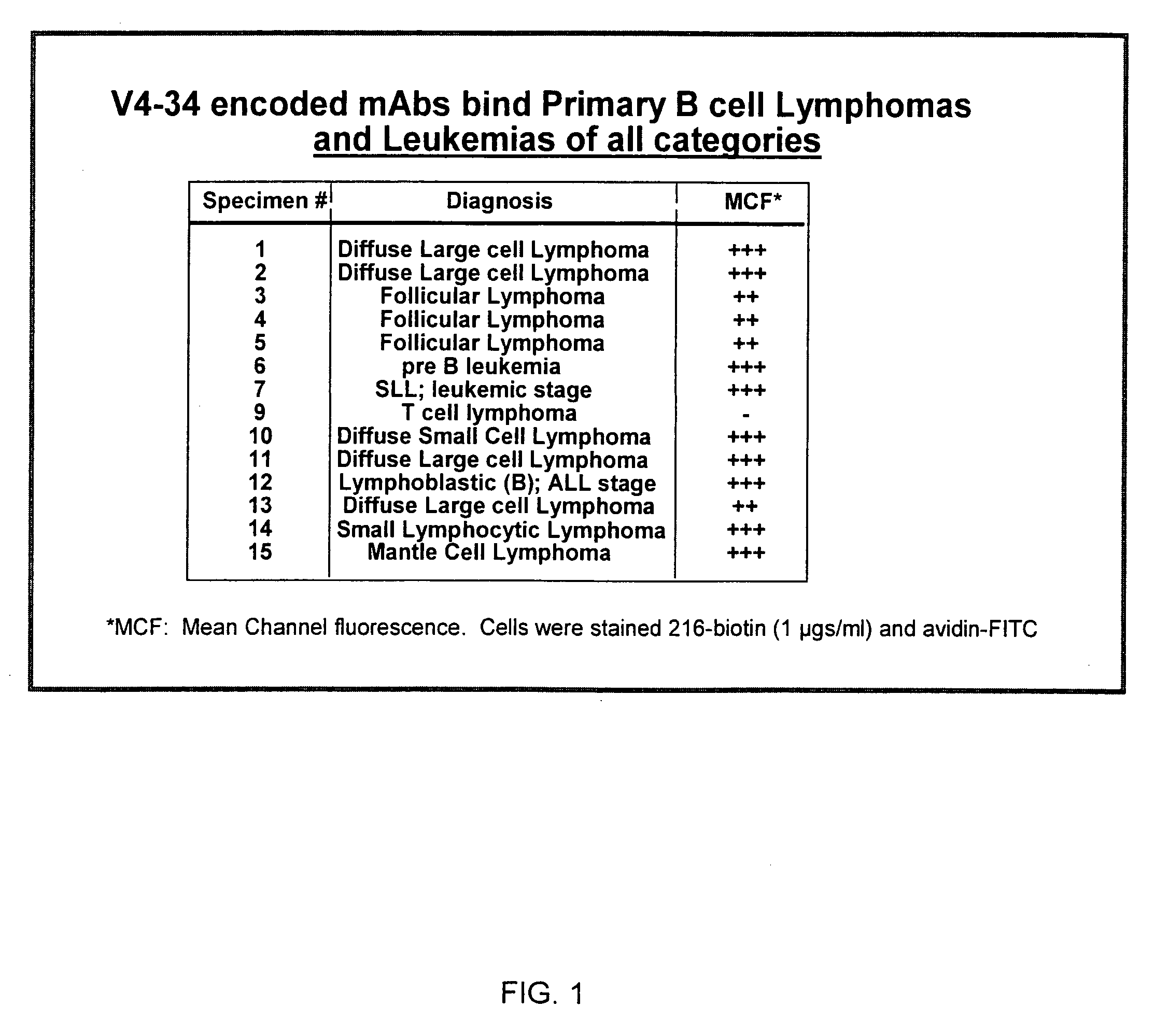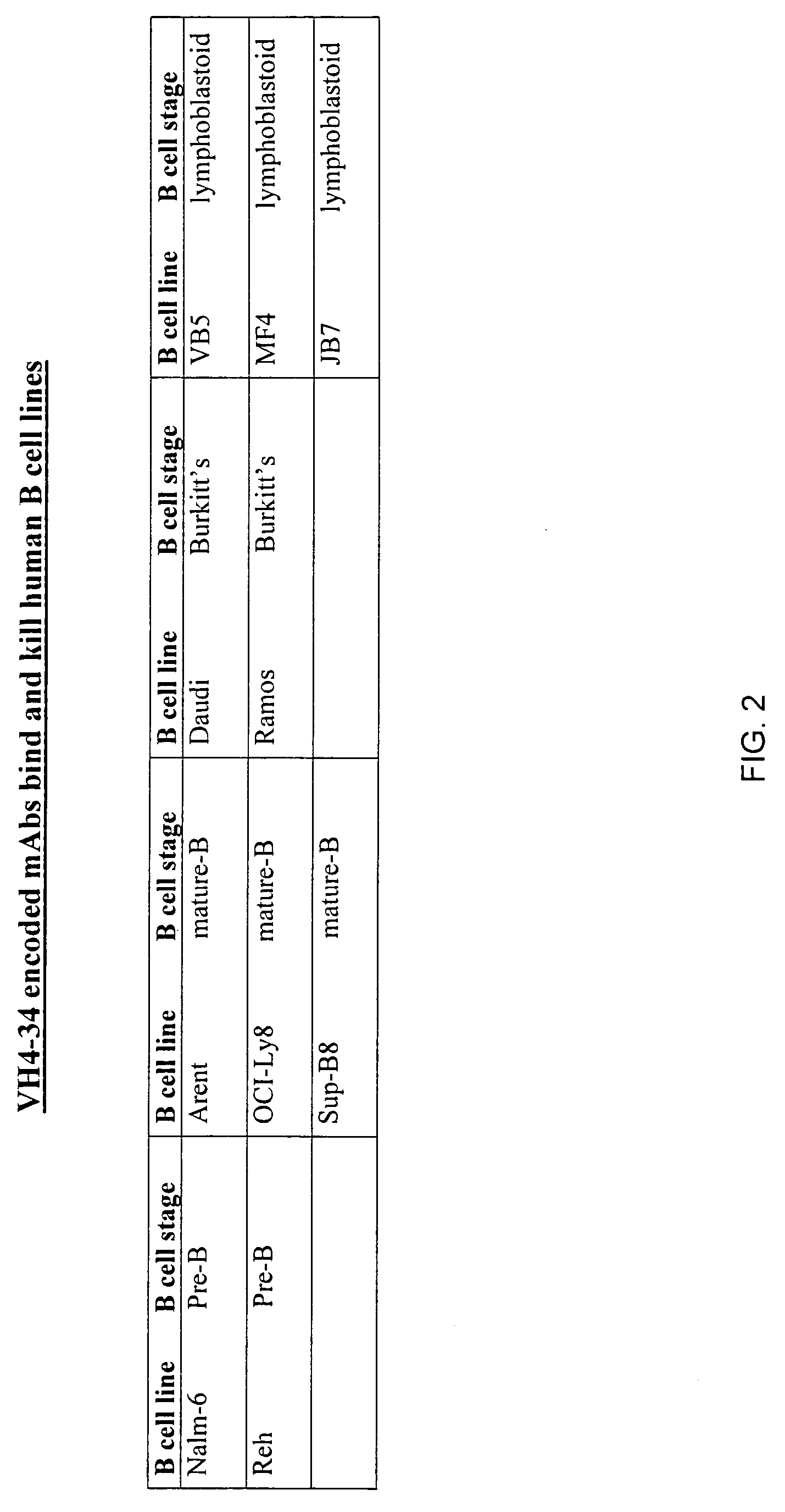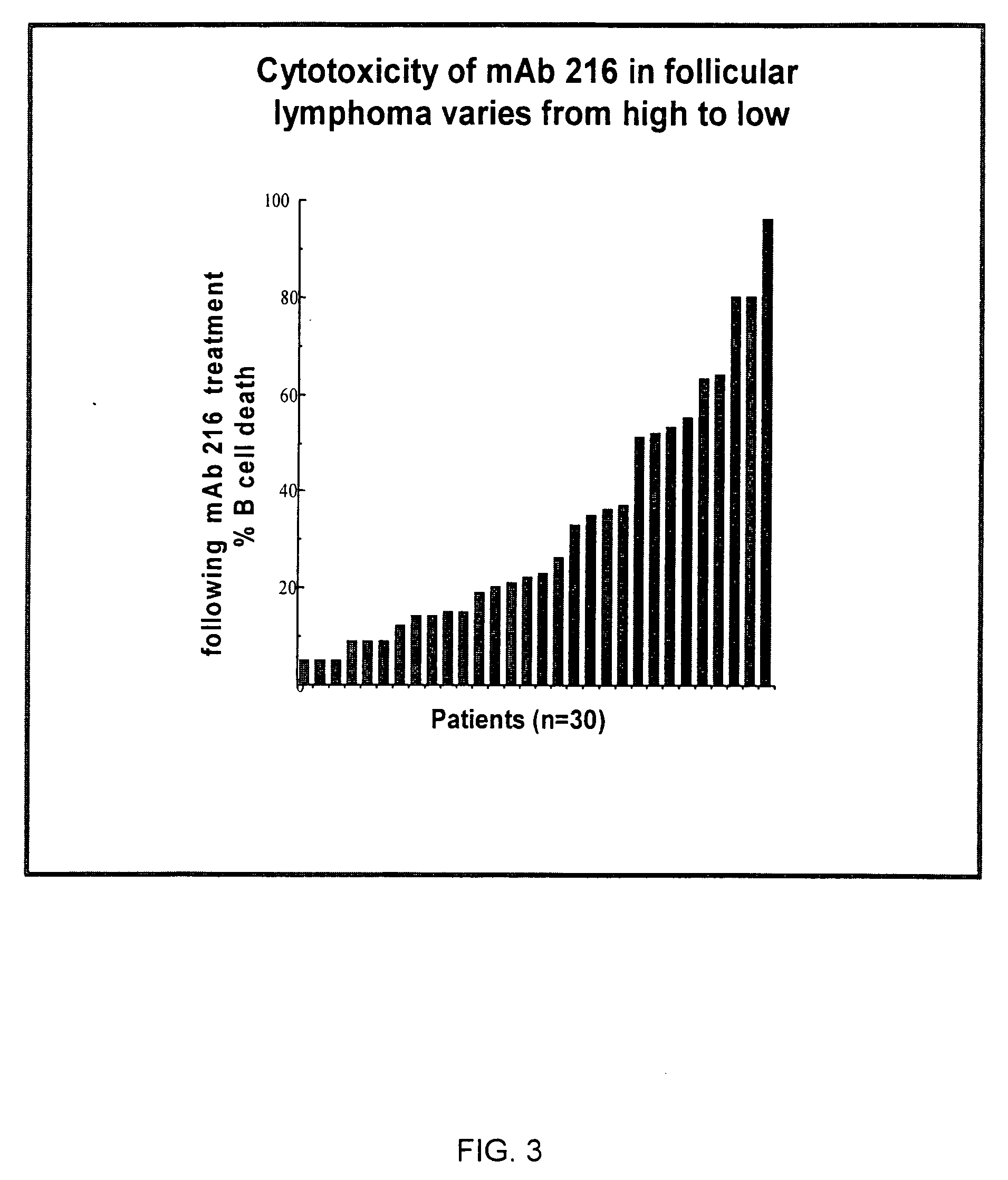Enhanced B cell cytotoxicity of CDIM binding antibody
a cdim and antibody technology, applied in the field of cancer and hyperproliferative diseases, can solve the problems of difficult to achieve complete remission with reinduction chemotherapy and unfavorable traditional chemotherapy cure, and achieve the effect of enhancing cytotoxicity, facilitating access to the b cell cytosol, and enhancing the cytotoxicity of chemotherapeutic agents
- Summary
- Abstract
- Description
- Claims
- Application Information
AI Technical Summary
Benefits of technology
Problems solved by technology
Method used
Image
Examples
example 1
mAb 216 Binds to CD19+ Bone Marrow Cells From Tumor Cell Bank
[0182] Twenty-seven fully characterized bone marrow samples were obtained from the Children's Oncology Group tumor cell bank. Thawed cells were stained with biotinylated mAb 216 and fluorescent-labeled streptavidin. MAb 216 bound to all 15 samples of CD19+ B-progenitor ALL with a mean channel fluorescence (MCF) of 717 (range 225-1020). Twelve samples of T cell ALL were tested and showed a MCF of 62 (range 28-149); 3 T-ALL had mAb 216-binding above background. The results are shown in FIG. 1, with the relative binding intensities indicated by +,”“++” and “+++,” and nonbinding indicated by “−”. As indicated in FIG. 1, mAb 216 binds to B cell lymphomas and leukemias of all types; but does not demonstrate significant binding to T cell lymphoma.
example 2
mAB 216 Kills Pre-B ALL Cells from Bone Marrow
[0183] Twelve specimens of fresh bone marrow (BM) were obtained from patients undergoing diagnostic bone marrow aspiration for leukemia and were analyzed in vitro for mAb 216-binding and cytotoxicity at 24 hours. Immunophenotyping for expression of CD19, CD10, CD34, CD20, CD3, CD2, and binding of biotin-labeled mAb 216 was performed on all samples. Cytotoxicity was assayed by washing and incubating BM overnight with 20 μg / ml mAb 216 or control IgM. Incubated cells were stained with FITC anti-CD19 and propidium iodide (PI). Cell death was measured by a change in % CD19+ cells and by PI uptake in CD19-expressing cells by flow cytometry.
[0184] Cytotoxicity, measured as percent of cells killed following incubation with mAb 216 as compared to incubation with control IgM, was as follows for BM from patients with pre-B ALL: 60-90% (n=4), 30-50% (n=4), and 7-20% (n=2). Increased cytotoxicity correlated with intensity of mAb 216 binding by MCF,...
example 3
Antibodies Kill B Cells in an Animal Model of B Cell Leukemia
[0185] Experiments with the human pre B cell Nalm-6 model of B cell leukemia in CB17 SCID and NOD / LtSz-SCID immunodeficient mice have shown increased survival and a 20% cure rate following treatment with mAb 216 22. Nalm-6 is a cell line derived from ALL that does not express the mature B cell antigen CD20 and gives a reproducible intravenous model of human tumor in the. SCID mouse 23. To treat mice, purified mAb 216, (400 μgs / 200 μl) was injected intravenously (IV) on days 1, 7, 14, and 21 post engraftment. Comparing mice to humans in body surface area, the mice received the human equivalent of 90-100 mg / m2 with each dose. Mice were observed for a period of 100 days for tumor development.
[0186] One mg of purified mAb 216 (human equivalent of approximately 220-250 mg / m2) and control polyclonal human IgM was injected IV in four Balb / c mice. At 24 hours blood was collected. A chemistry panel, which included creatinine, bil...
PUM
| Property | Measurement | Unit |
|---|---|---|
| Electric charge | aaaaa | aaaaa |
| Gene expression profile | aaaaa | aaaaa |
| Cytotoxicity | aaaaa | aaaaa |
Abstract
Description
Claims
Application Information
 Login to View More
Login to View More - R&D
- Intellectual Property
- Life Sciences
- Materials
- Tech Scout
- Unparalleled Data Quality
- Higher Quality Content
- 60% Fewer Hallucinations
Browse by: Latest US Patents, China's latest patents, Technical Efficacy Thesaurus, Application Domain, Technology Topic, Popular Technical Reports.
© 2025 PatSnap. All rights reserved.Legal|Privacy policy|Modern Slavery Act Transparency Statement|Sitemap|About US| Contact US: help@patsnap.com



